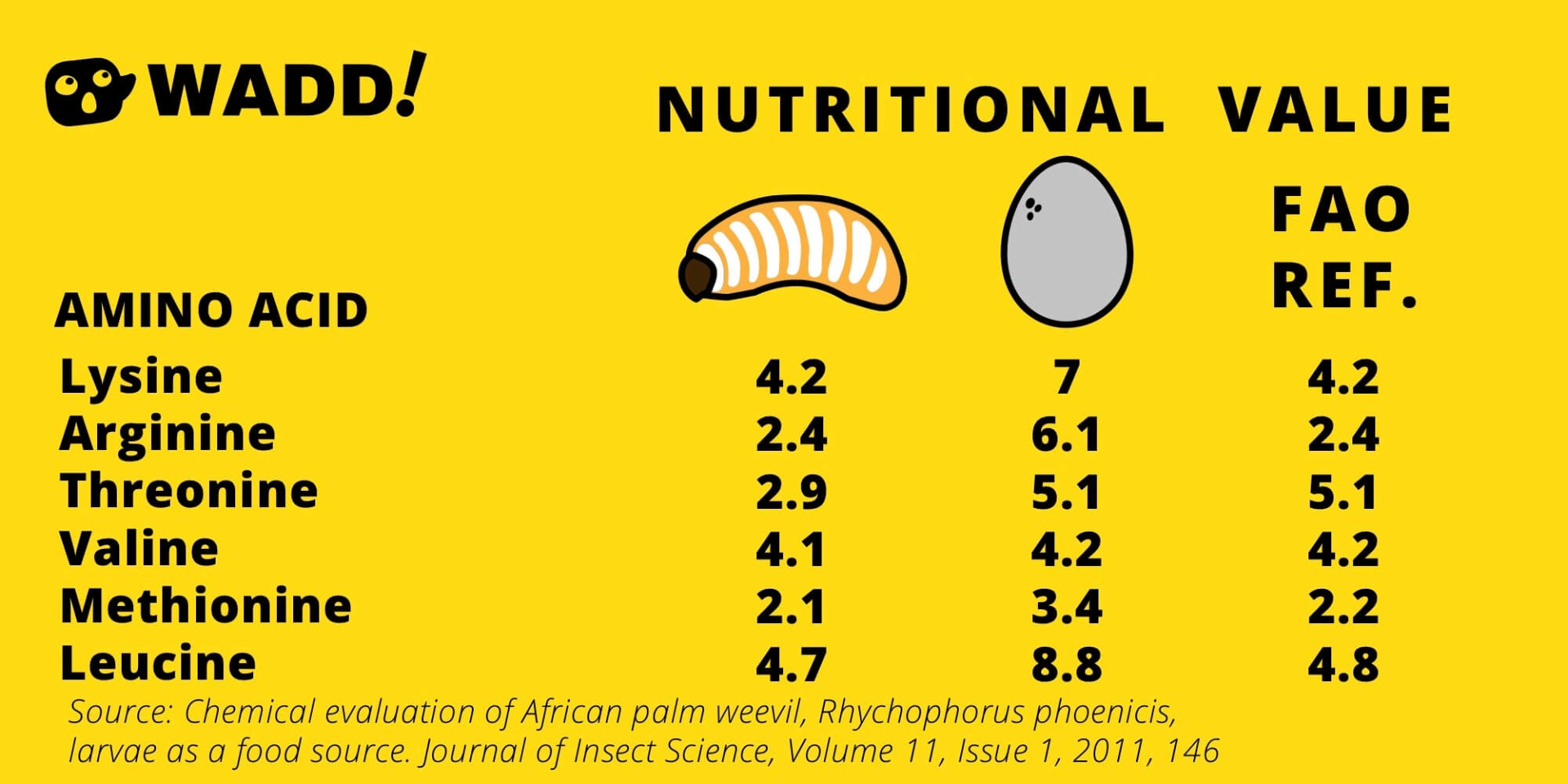Some may squirm at the thought of eating sago worm while in Sarawak eating sago worm is popular among the Melanau, Iban and Bidayuh communities.

Sago worm is the Capricorn beetle larvae (Rhynchoporus ferruginous) that live and feed on the pulp of the trunk of the sago palm. It has a plump, yellowish body with a hard-shelled head.
So how to find these sago worms?
The best place is in the sago palm, as these worms feed on the starchy pith of decaying sago palm tree, before they are mature and transform into beetle after 2 months. Some farmers also deliberately cut some open the fallen sago tree, to attract the female weevils to lay eggs inside. Within one or two months, they could harvest up to 100 sago worms per trunk!
The sago worms could die under direct sunlight and dry place. That's the reason why farmers will keep them in the shade with a few pieces of damp sago wood.
How nutritious is the Sago Worm?
According to a study published by the Asia Pacific Clinical Nutrition Society (APCNS) in 2018, Sago worms as a nutritious traditional and alternative food for rural children in Southeast Sulawesi, Indonesia shows sago worm can improve the nutrition of the children.
Refer below for a summary of the comparison between sago worm, chicken and beef per 100grams.

In another study published by Journal of Insect Science, compares sago worms nutrition with eggs. The results showed that the sago worm gave efficient complementation of the amino acids, which met the FAO reference pattern except for tryptophan and isoleucine.

Image source via academic.oup.com
Interestingly, the study also compares it recommended code standards for some edible oils. While the presence of the essential fatty acid, linoleic acid (3.51% of total lipid), makes it useful in the preparation of pharmaceuticals.
Nutritional fact aside, most people go for the sago worm purely for of personal liking of the taste of the grub.
There are many ways to cook sago worm. Some like it wok-fry with soy sauce with ginger while others like it grill over charcoal fire. To clean the worms, shake off its dust, then rinse them in running water to remove any particles and leave them to dry. When the wok is medium heat, put in the worms lightly fry it. Do not over fry them. It tastes best when they are slightly seared, making it crispy and juicy.
Some prefer taking it uncooked. To eat live ones, hold one by its head, pop its wriggling body, tail first, into the mouth, then bit at the tip of its head, pull off its head. It is very creamy.
In Sarawak, sago worms are readily available in the wet market. Some of the more "creative" restaurants turned it into a dish.

Wood Roasted Sago Worm Pizza Image source via Facebook/ LasanDenak
Read more on the nutritional value of Sago worm here.
Read next: Famous Chefs Refuse To Eat These Foods.

Source: Sarawak Tourism Board








